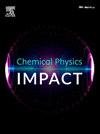从废弃电气电子设备(WEEE)中回收贵金属可持续方法的最新进展
IF 4.3
Q2 CHEMISTRY, PHYSICAL
引用次数: 0
摘要
由于世界人口的快速增长和电子/电气设备的使用增加,全球每年生产数百万吨的报废电子电气设备。报废电子电气设备含有塑料、金属、耐火氧化物等有害物质。贵金属排放的迅速增加与报废电子电气设备的排放同时发生,引起人们对环境影响、人类健康问题和自然资源枯竭的日益关注。在此背景下,考虑到循环经济和可持续性,贵金属回收近年来受到了科学界的广泛关注。溶剂萃取和浸出是回收废金属的主要技术。由于在这两种技术中使用的传统化学品所带来的挑战,寻找用于回收贵金属的更安全、更清洁和更环保的化学品是一个值得关注的问题。在迄今为止使用的一系列化学品中,一个新的产品系列,即“深共晶溶剂”(DES),近年来得到了人们的关注。这篇综述涵盖了更广泛的方式来描述DES及其特征,并将必需品作为从报废电子电气设备中回收贵金属的替代介质,因为只有有限的文献提供了使用DES进行金属回收的适当方法和策略。在此,还报告了WEEE全球卓越的框架及其在全球管理中的当代进步。对从报废电子电气设备中回收贵金属的最新技术进行了文献评估。综述了从报废电子电气设备中获取贵金属的绿色技术途径。本文综述了一种利用DES选择性回收金属的方法,表明DES可以在提取金属后重新利用。本文章由计算机程序翻译,如有差异,请以英文原文为准。

Recent advancements in sustainable approaches to recover precious metals from waste electrical and electronic equipment (WEEE)
Due to the rapid growth of the world's population and the increased use of electronic/electrical equipment, millions of tonnes of WEEE are produced globally every year. WEEE has harmful substances such as plastics, metals, and refractory oxides. The rapid increase in the discharge of precious metals, concurrent with WEEE, raises growing concerns about environmental impacts, human health issues, and the depletion of natural resources. In this context, considering circular economy and sustainability, precious metal recovery has gained considerable attention from the scientific community in recent years. Solvent extraction and leaching are the main techniques for recovering metals from waste. Due to the challenges associated with conventional chemicals used in both techniques, it is a matter of concern to look into safer, cleaner, and greener chemicals used to recover precious metals. In a series of chemicals used so far, a new family of products, i.e., "Deep Eutectic Solvents" (DES), has gained consideration in contemporary years. This review covers a broader way to describe DESs and their characteristics, with the essentials as a substitute medium for recovering precious metals from WEEE, as there is only limited literature available that provides proper methods and strategies using DES for metal recovery. Herein, also report the framework towards the global eminence of WEEE and its contemporary advancement in management across the globe. An assessment of the literature is prepared on the state-of-the-art technologies in precious metals recovery from WEEE. The brief discussion of green technology approaches to acquiring precious metals from WEEE is reviewed. This review gives an approach for selective recovery of metal using DES, which suggests that the DES can be re-utilized after the extraction of metals.
求助全文
通过发布文献求助,成功后即可免费获取论文全文。
去求助
来源期刊

Chemical Physics Impact
Materials Science-Materials Science (miscellaneous)
CiteScore
2.60
自引率
0.00%
发文量
65
审稿时长
46 days
 求助内容:
求助内容: 应助结果提醒方式:
应助结果提醒方式:


